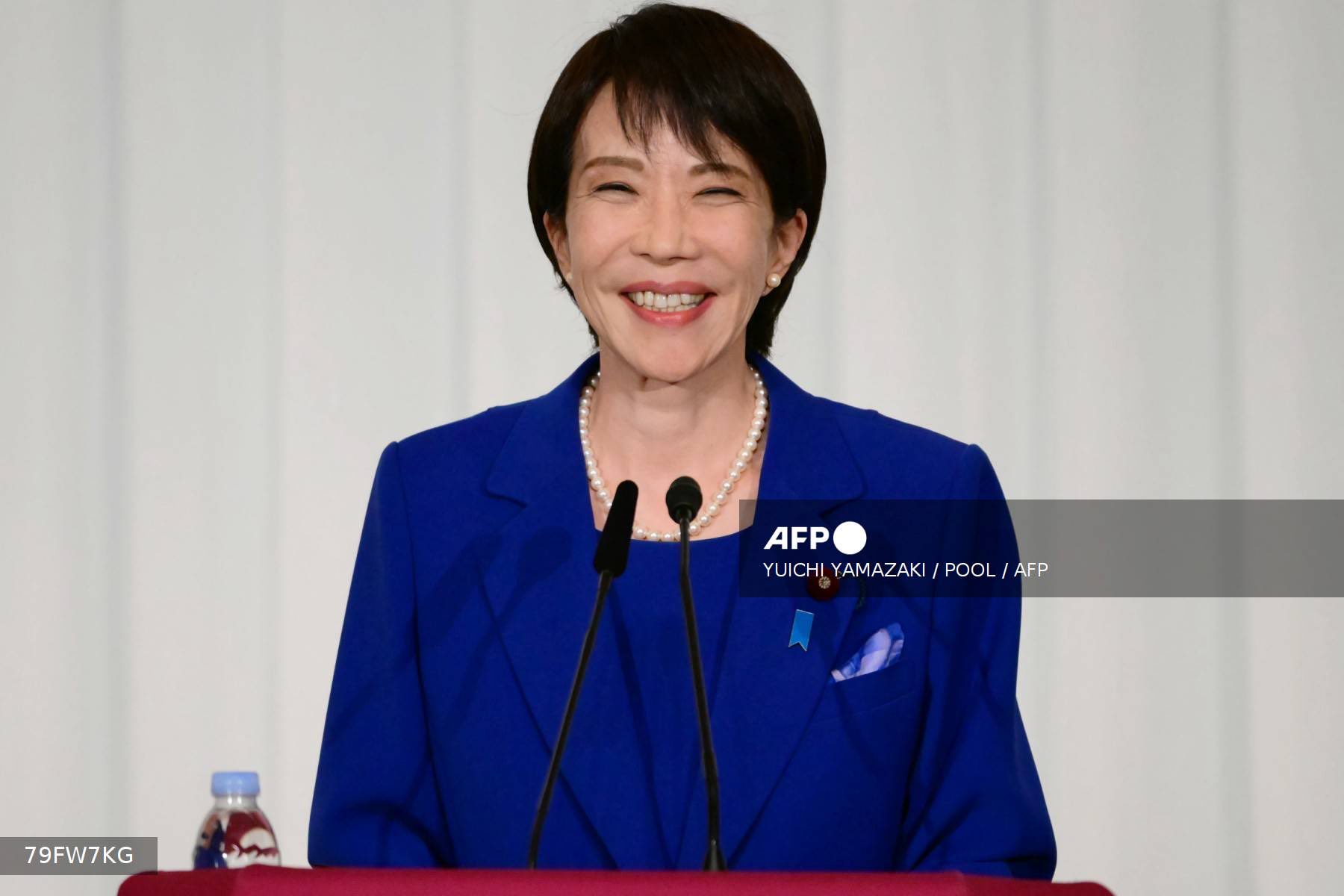

In a groundbreaking political shift that has sent waves of excitement and pride across Japan and beyond, Sanae Takaichi has officially been sworn in as Japan’s first-ever female Prime Minister, breaking a centuries-long tradition of male dominance in the nation’s highest political office. The announcement, made earlier today in Tokyo, marks a historic turning point not just for Japan’s political landscape but also for women’s representation in leadership across Asia. Crowds gathered outside the National Diet building, waving Japanese flags and cheering as Takaichi, dressed in a sleek navy suit with her signature composed smile, stepped out to address the nation for the first time as Prime Minister.
The 63-year-old conservative lawmaker, who has been a prominent figure within the ruling Liberal Democratic Party (LDP) for years, secured her victory following an intense leadership race that captivated both the media and the public. Her win represents a symbolic and substantive victory for women in Japan, a country long criticized for its slow progress on gender equality in politics and corporate leadership. Takaichi’s rise to the top job has been hailed as a long-overdue milestone in a society where traditional gender expectations have often hindered women’s ascent to positions of power.
In her victory speech, Takaichi delivered a powerful message of unity, resilience, and progress. “Today, we open a new chapter in Japan’s history—one where every child, regardless of gender, can dream freely and achieve greatly,” she declared before a roaring crowd of supporters and international journalists. She went on to express gratitude to her predecessors while promising to “modernize Japan’s future with courage, innovation, and inclusion.” The emotional moment drew tears from many women in the audience, some of whom waved signs that read, “Finally, a woman for Japan.”
Sanae Takaichi’s journey to the top has been anything but ordinary. Known for her disciplined demeanor, strong conservative stance, and loyalty to the LDP’s traditional values, she has carved out a distinctive identity in a political sphere dominated by men. Born in Nara Prefecture in 1961, Takaichi’s early life was marked by academic excellence and determination. She studied at Kobe University, where she earned a degree in political science, and later developed a keen interest in U.S. politics, which led her to study as a visiting scholar at the University of Southern California. Those formative years abroad exposed her to Western political systems and women in leadership—an experience she has often cited as deeply influential in shaping her vision for Japan.
Her political career began in the early 1990s when she was first elected to the House of Representatives. Over the decades, she held several key cabinet positions, including Minister for Internal Affairs and Communications, and became known for her hardline policies on national security and her advocacy for strengthening Japan’s defense posture. Yet, despite her conservative reputation, Takaichi has also been a consistent voice for women’s empowerment, arguing that Japan cannot compete globally without unlocking the full potential of its female workforce. Her pragmatic mix of traditional and progressive ideals has helped her connect with both the old guard of the LDP and younger voters yearning for change.
Takaichi’s path to the premiership was not without controversy or resistance. Throughout her campaign, she faced scrutiny from both domestic and international media, with critics questioning whether her conservative views aligned with the feminist symbolism of her candidacy. Some questioned her close association with former Prime Minister Shinzo Abe, under whom she served as a loyal cabinet member. However, her supporters argue that her political discipline, integrity, and years of experience made her the most qualified candidate to navigate Japan through an era of economic uncertainty and geopolitical tension.
In the weeks leading up to the leadership election, Takaichi’s popularity surged unexpectedly among young voters and women. Social media became a key battleground, where hashtags such as #TakaichiForChange and #JapanHerTime trended for days. Supporters shared inspiring clips of her speeches and interviews, celebrating her as a symbol of perseverance in a male-dominated field. Many young Japanese women expressed that seeing her rise gave them renewed belief that gender barriers could finally be broken in Japan’s rigid corporate and political hierarchies.
Her inauguration ceremony at the Imperial Palace was steeped in tradition and emotion. Dressed in a formal kimono during the imperial audience with Emperor Naruhito, Takaichi bowed deeply as she accepted the official appointment, symbolizing both respect for Japan’s enduring traditions and a bold new chapter for its future. Moments later, in her first official address from the Prime Minister’s Office, she outlined her vision for “a Japan that leads through innovation, equality, and strength.”
Takaichi emphasized three core priorities for her administration: revitalizing Japan’s struggling economy, strengthening national security amid rising regional tensions, and implementing policies to empower women and families. “We must ensure that every woman who dreams of contributing to Japan’s progress has the tools, support, and respect to do so,” she stated, signaling a strong commitment to tackling the gender pay gap, workplace inequality, and barriers to political participation.
Global leaders were quick to send their congratulations. U.S. President Kamala Harris described Takaichi’s election as “a victory for democracy and gender equality,” while French President Emmanuel Macron hailed it as “a moment of inspiration for the entire world.” In neighboring South Korea, President Yoon Suk-yeol expressed hope for closer collaboration between Tokyo and Seoul under her leadership, emphasizing shared security and economic interests.
Domestically, reactions were mixed but largely positive. Many Japanese citizens celebrated the moment as a long-awaited breakthrough in a country that ranks low among developed nations in gender equality indices. Others, however, urged caution, noting that one woman’s success does not automatically dismantle systemic barriers. “It’s a huge step forward, but the real test will be how she transforms Japan’s political culture,” said Professor Haruko Tanaka, a political analyst at the University of Tokyo. “If she can use her platform to open doors for other women, then her legacy will be truly historic.”
As Japan ushers in this new era under Prime Minister Sanae Takaichi, the atmosphere is charged with both hope and expectation. Her rise represents a blend of persistence, vision, and historical reckoning—a realization that Japan, while rooted in tradition, is ready to embrace a more inclusive future. Across the world, her name now stands alongside the likes of Margaret Thatcher, Angela Merkel, and Jacinda Ardern as one of the few women to lead a major world power.
For millions of Japanese citizens, especially women and young girls, today is more than a political victory—it is a symbol of what is possible when courage meets opportunity. And as Takaichi herself declared at the close of her speech, her voice steady with emotion: “This is not the triumph of one woman. It is the triumph of every woman who ever dreamed that Japan could change.”
The nation erupted in applause, the world watched with admiration, and
history—finally—was made.


